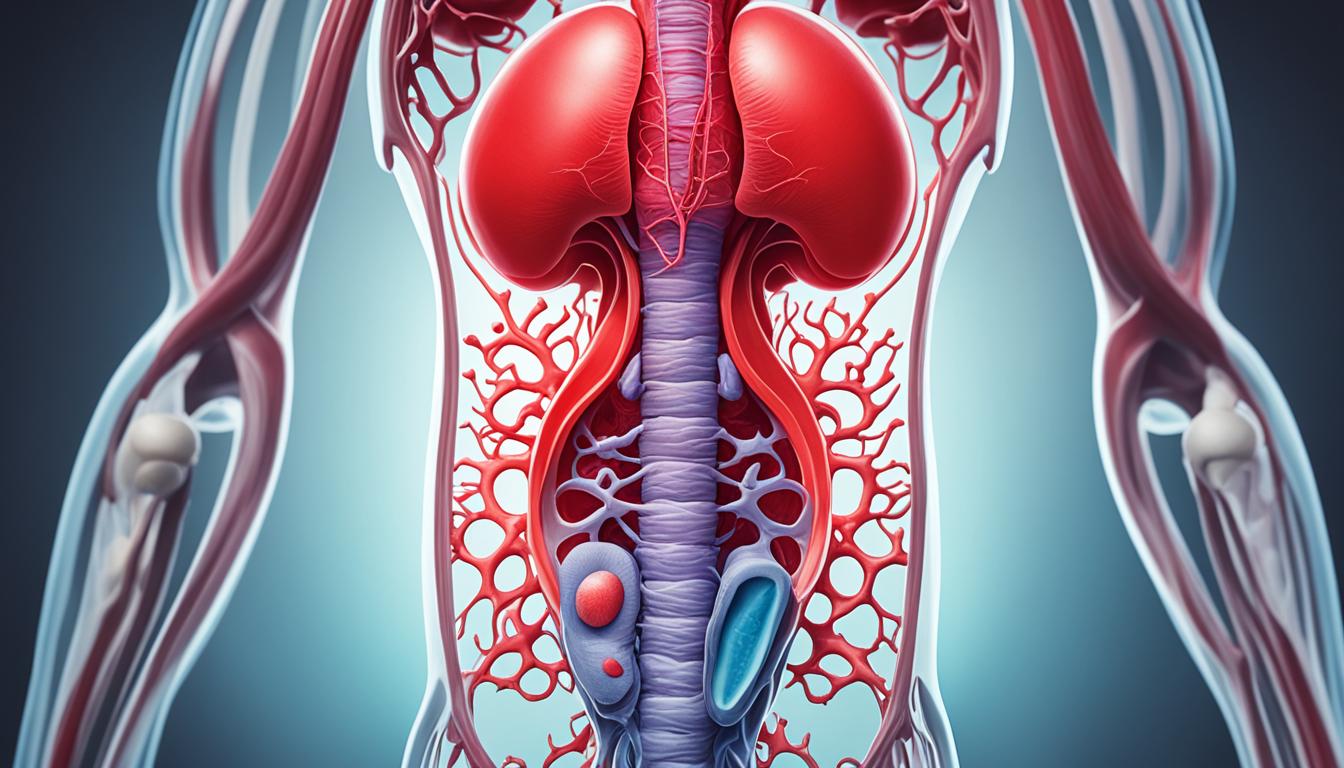Cryptorchidism is a condition when one or both testicles don’t descend into the scrotum at birth. It’s also called undescended testicle or testicular maldescent. This affects many male newborns. It can lead to problems if not treated.
About 3-4% of full-term male newborns have this, along with 21% of premature babies. Usually, just one testicle is undescended. But sometimes, both are affected in 10% of cases.
Key Takeaways
- Cryptorchidism is a condition where one or both testicles fail to descend into the scrotum during fetal development.
- It affects approximately 3-4% of full-term male newborns and 21% of premature infants.
- Most cases of cryptorchidism involve only one testicle, but both testicles can be undescended in 10% of cases.
- Early diagnosis and treatment of cryptorchidism are important to prevent potential complications.
- Stem cell therapy is an emerging treatment option that shows promise in addressing cryptorchidism.
Causes and Risk Factors of Cryptorchidism
The reasons for cryptorchidism, or undescended testicle, include genetic, hormonal, and environmental aspects. Although we don’t know the exact cause, research shows several risk factors linked to it.
Genetic Factors
Genetic issues are a big part of why cryptorchidism happens. Certain gene problems can raise the risk of a boy having undescended testicles. These genes are important for how the testicles move from the body into the scrotum.
Hormonal Factors
Hormones during a baby’s early growth are key for the testicles to drop rightly. If these hormones aren’t made enough or are not working well, the process can be stopped. This can keep the testicles out of the scrotum.
Environmental Factors
Certain things in our environment can also increase the chance of cryptorchidism. Being around chemicals that mess with hormones before birth might be a problem. Even when the mother smokes during pregnancy, it can up the risk.
Risk Factors
Certain things make cryptorchidism more likely to happen. Being born early is a big one because the last part of pregnancy is when the testicles usually move down. Also, if there’s a history of this issue in the family, a baby might be more likely to have it.
More research is still needed to fully understand cryptorchidism. Scientists are looking into how these genetic, hormonal, and environmental parts work together. Their goal is to find better ways to spot, stop, and treat this condition early.
Diagnosis and Treatment of Cryptorchidism
Cryptorchidism is often detected by a check-up, imaging scans, and genetic tests. It aims to find the hidden testicle and watch for genetic issues. These steps are crucial for managing the condition.
Physical Examination
A doctor starts by looking at the scrotum and belly. They feel around to find the testicles. If they can’t find them, more checks will be needed to see where they are.
Imaging Tests
When the testicle can’t be found easily, imaging like ultrasound or MRI is used. These create clear pictures for doctors to spot the testicle. This helps pick the right treatment.
Genetic Testing
Genetic tests might be suggested to understand any genetic causes. This testing can be very informative. It gives information for the treatment plan.
Treatment Options
The treatment path changes with the patient’s age and how severe the issue is. The main aim is to get the testicle down to the scrotum. This can lower risks like infertility and cancer later.
Orchidopexy: Orchidopexy moves the testicle to the right spot. It is a common surgery for cryptorchidism. It secures the testicle, preventing it from moving back up.
Stem Cell Therapy: Stem cell treatment is new for this condition. It uses stem cells to try and help the testicle move down. It might be a choice for some cases.
Discuss with your healthcare provider which treatment is best for you. Consider your age, general health, and any genetic issues. They can help find the right plan for your situation.
Conclusion
Cryptorchidism, or undescended testicle, is a condition many newborn boys face. It means one or both testicles don’t drop into the scrotum. Without proper care, it can cause serious issues.
Spotting cryptorchidism early is crucial. Doctors use physical checks and tests like ultrasound to find out more. Treatments could include surgery or innovative stem cell therapies. These solutions aim to move the testicle where it should be or help with fertility.
Early treatment is important for cryptorchidism. It can save from future problems and ensure a better life for those with this condition.

